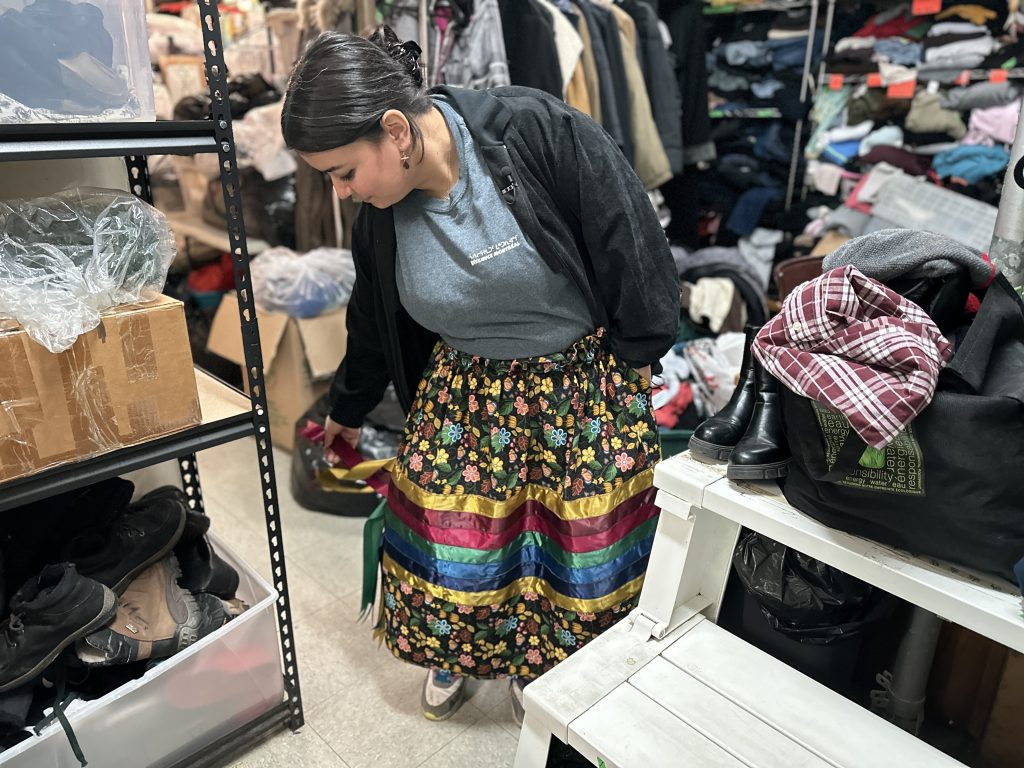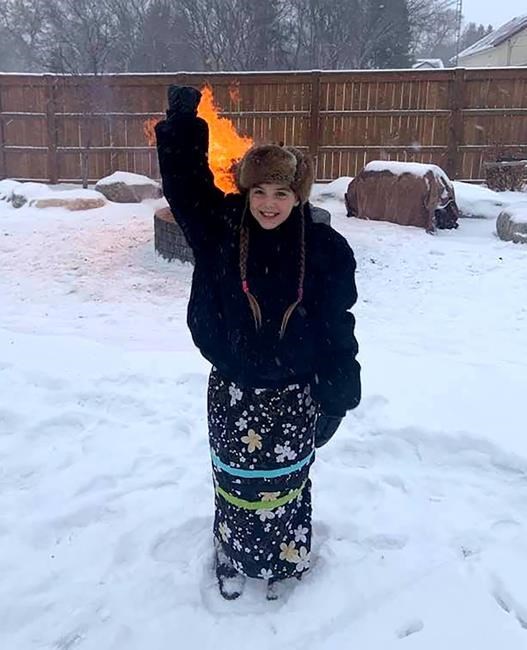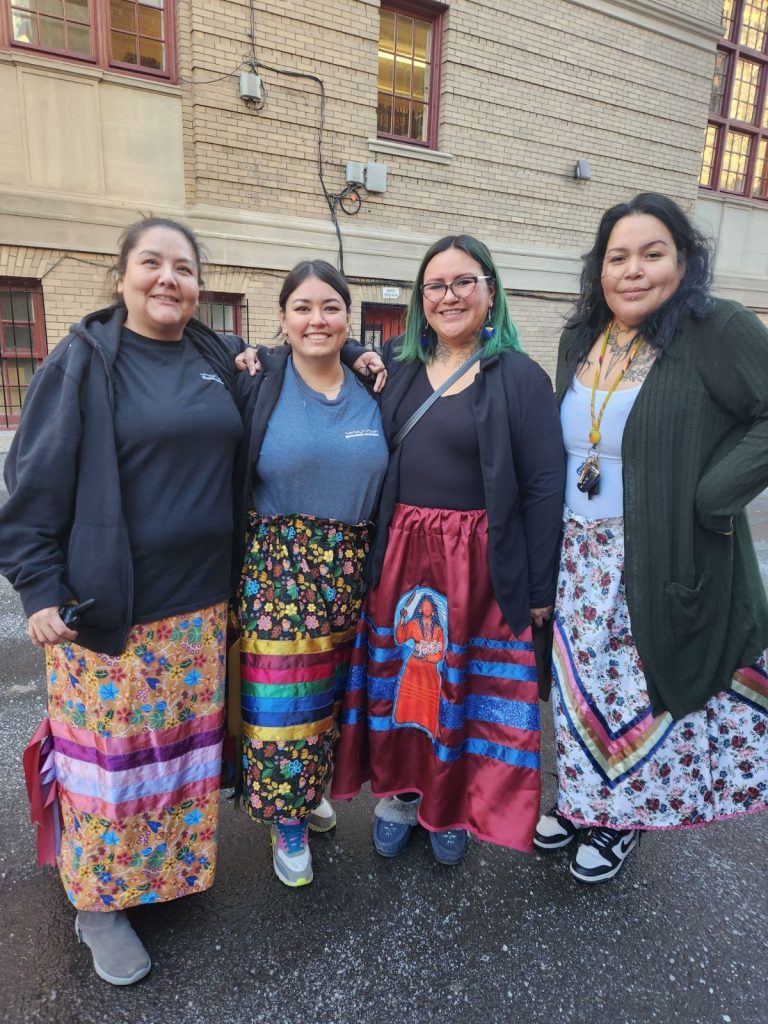‘I wear it proudly’: Indigenous women in Montreal celebrate second National Ribbon Skirt Day
Posted January 4, 2024 1:43 pm.
Last Updated January 4, 2024 6:48 pm.
Thursday marks the second National Ribbon Skirt Day in Canada.
Workers at Resilience Montreal, a day shelter, wore the traditional garments — a centuries-old symbol of identity, adaptation and survival for Indigenous women, girls and gender-diverse people.
“I wear it proudly,” said Jessica Lee, Intervention Worker at the non-profit. “They’re used for ceremonies, for marches.”
“I’m proud to be representing the Indigenous community, Indigenous women.”

“Finally something is being noticed in our culture,” added Maggie Chittspattio, Lead Intervention Worker at Resilience Montreal. “It means a lot.”
“It gives us a moment to talk about our ways.”
National Ribbon Skirt Day began with the story of Isabella Kulak of Cote First Nation in Saskatchewan back in Dec. 2020.
Kulak, a 10-year-old Anishinaabe girl, decided to wear her ribbon skirt to a formal day at her school. However, an educational assistant shamed her and deemed the garment not formal enough — prompting Manitoba Sen. Mary Jane McCallum to introduce a bill making Ribbon Skirt Day nationally recognized.
In 2023, Canada marked the first National Ribbon Skirt Day, after the bill to recognize the event every Jan. 4 passed in Parliament late the previous year.

“It makes me so proud that she wants to represent her culture,” said Lee. “It’s good leadership skills for everyone who’s watching her.”
“Especially young children,” added Lee. “Young Indigenous children.”
“As a kid her age, I would’ve loved to have her strength,” said Chittspattio. “She had so much power.”
“She makes all the Indigenous people, especially me, very proud.”

“50 per cent of our staff here at Resilience are Indigenous,” explained David Chapman, Resilience Montreal’s Executive Director. “The goal obviously with that is that there is representation.”
“On a day like today, Ribbon Skirt Day, I’m happy that Resilience is here,” he added. “I’m happy that we have an Indigenous, largely Indigenous staff.”
“I’m happy that their strength to speak out, grows by the day.”
Brightly patterned and typically handmade, ribbon skirts and shirts hold cultural significance for Indigenous nations across North America.
Although not traditionally Mi’kmaq attire, Janean Marshall, an Eskasoni-based ribbon skirt maker in Nova Scotia, says ribbon skirts were made with intertribal designs before local artisans incorporated Mi’kmaw designs and symbols.
Mi’Kmaw Designs
“I moved to Eskasoni at the time back in 1996 pow-wows were just becoming a thing here in eastern Canada; I didn’t feel comfortable wearing a ribbon dress and practicing traditional practices at that time,” Marshall said. “It’s been a long time of learning and understanding using Mi’kmaw designs in ribbon work and regalia making.”
Marshall, 46, is a seamstress known for her custom ribbon skirts. She moved to Eskasoni from Massachusetts 27 years ago and has dedicated her life to preserving Indigenous culture and identity, not only through her ribbon skirts but mainly as director of academic services for Mi’kmaw Kina’matnewey (Mi’kmaw education authority.)
Marshall’s primary work may be as an education director but during the COVID-19 pandemic, she channelled her sewing skills into Sew Bears Co., her own seamstress business. Initially making masks and baby quilts, her focus shifted towards creating custom ribbon skirts, which have gained popularity over the past two years. Marshall says ribbon skirts hold cultural symbolism but also a personal symbolism.
Reclamation, Responsibility and Reconciliation
“The beauty of being a ribbon skirt maker is that you get to help that person who wants to reclaim a part of their identity,” she said. “I had a number of elders instruct me that ribbon work is a form of prayer. There’s significance behind the colour, the shape, even the placement of ribbons, it all tells a story.”
Now, as Canada recognizes its second National Ribbon Skirt Day, it represents both a reclamation of Indigenous identity and an act of reconciliation. For Indigenous people, it’s an opportunity to display their culture. For non-Indigenous allies, Marshall says, it’s a chance to show respect.
“If you feel you can wear that skirt in a good way, as a celebration of your Indigenous brothers and sisters, and you’ve been invited to an event and you recognize it’s appropriate attire, I say ‘go for it,” she said. “But if you’re a non-indigenous person that sees a ribbon skirt or shirt and says ‘I can do that, I’m going to start making skirts for profit,’ well that’s cultural misappropriation.”
Marshall says the day’s importance can be explained with 3Rs: reclamation, responsibility, and reconciliation.
“Wearing that skirt means you’re ribboning up, that you have the responsibility and the duty to back to your community and culture. You don’t just wear that skirt because it’s fashionable or cool; you wear it as a badge of honour.”
—With files from The Canadian Press



